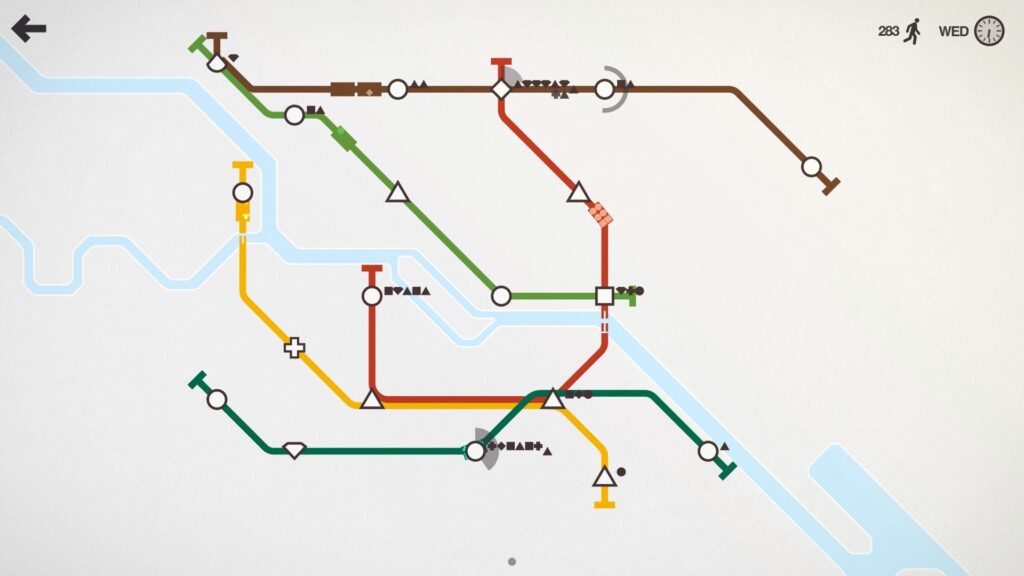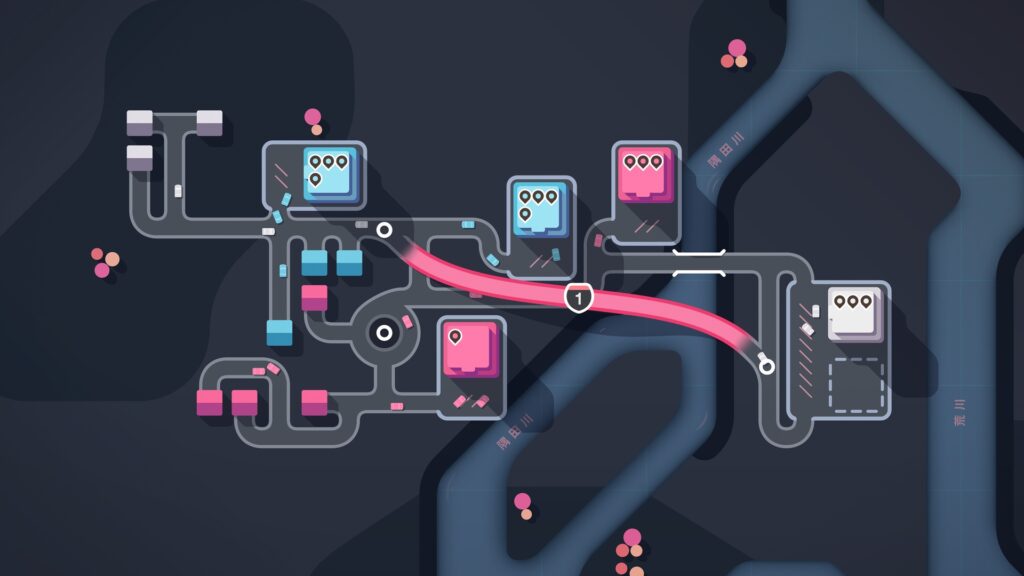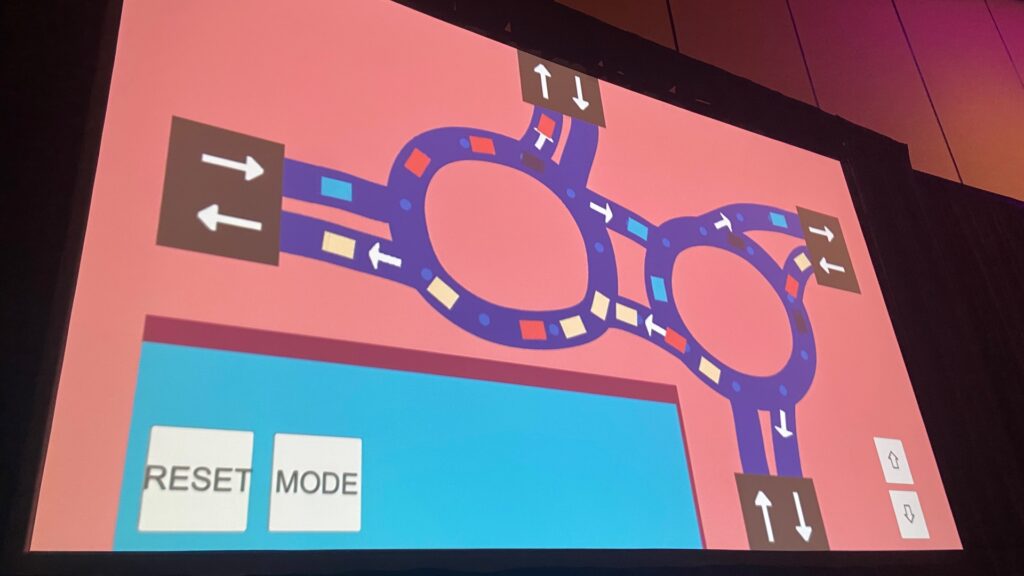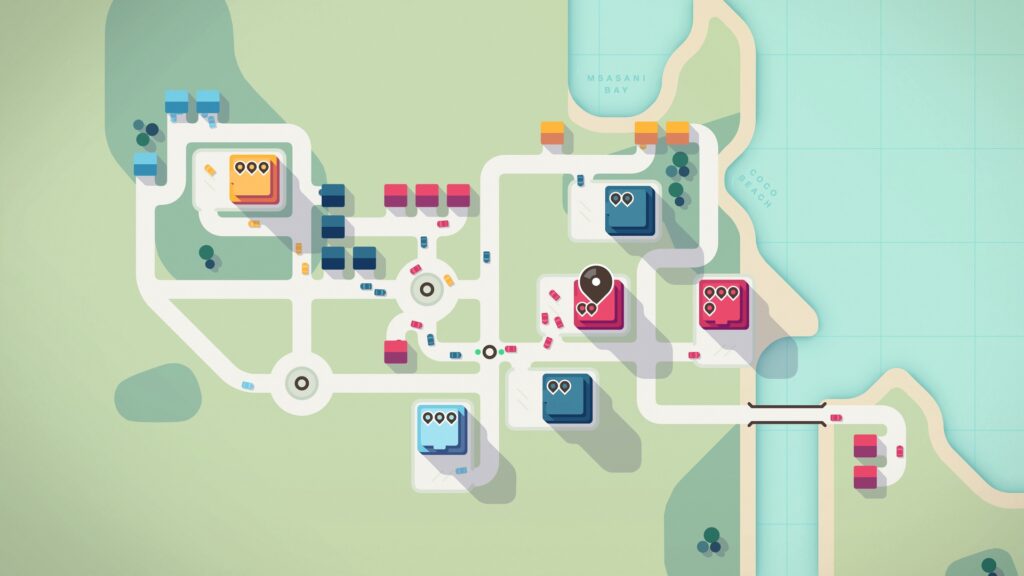In their GDC 2023 talk, Dinosaur Polo Club’s Tana Tanoi spoke about the importance of Wuselfaktor (and other design factors) in Mini Metro and Mini Motorways.
New Zealand-based Dinosaur Polo Club has forged a distinct identity with two games in its self-named Miniverse. 2015’s Mini Metro and 2019’s Mini Motorways blend accessible gameplay mechanics with abstract visual design to create simulations based on hum-drum aspects of everyday life.
Their success is partly due to their accessibility and a pitch-perfect challenge that gradually increases in complexity while creating an ever more captivating spectacle on screen.
At this year’s Game Developer’s Conference, Dinosaur Polo Club’s technical designer Tana Tanoi spoke about the studio’s prototyping process, player agency, and the appeal of Wuselfaktor.
Wuselfaktor is a German term commonly associated with simulation or city-builder games that feature small elements moving together, either randomly or according to a specific system. It describes the innate joy of watching a bustling system and seeing its components – people, cars, or trains, for example – doing their own thing on a macro scale.
“It’s the bread and butter of our style of games,” says Tanoi. ” For us, what that means is we have a very specific type of game feel that we base all of our games on. And the way it manifests is having an increasing number of predictable agents navigating around a network that grows more complex over time.”

A key element to the success of Mini Metro and Mini Motorways is the level of control a player has over these networks. As Tanoi explains, players are given command of a critical but deliberately narrow part of the simulation. In fact, players are just as much an observer as they are controlling the game.
“In Mini Motorways, the player controls roads. They don’t control where buildings spawn, they don’t control where houses spawn, and they don’t control which car leaves to go to what destination. They don’t control a lot of things, basically,” he says. “In Mini Metro, it’s the same. They control the lines and they control the trains, but they don’t control what kind of passengers, or what stations, or where those stations appear.”
And that’s the magic. None of these simulations can run without the input of the player, but relatively little input is required to get the simulation going. Furthermore, those same small inputs are all that’s needed to manage the simulation as it develops.
“This is important as we want players to make numerous but small and impactful decisions,” says Tanoi. “But running the simulation isn’t the same as having the simulation run efficiently. So at any point, the player can just delete everything and start again with the current iteration of the puzzle.”

This focus contributes to the accessibility of both games. They appeal to players who are casually interested in fun diversions featuring cars or trains but also players who embrace puzzles and want to test the limits of the simulation.
“Firstly, it should be incredibly easy to start playing,” says Tanoi. “You just pick a game mode and a map, and you go. You don’t have to choose a weapon to design a city. It also means the games have a more reactive play style. Every time the game asks something of the player in order to continue, the player just has to make a reactive decision. It’s a lot easier to make changes when you’re prompted to do so, rather than just having a clean slate and saying, just go ahead.”
“As the game progresses, the decisions the player makes get more and more complicated, with more implications on the network as things grow bigger. All of this contributes to that calm-to-frantic arc that our games tend to have.”
To achieve this balance of accessible but challenging gameplay (with Wuselfakter) Dinosaur Polo Club employs a rigorous prototyping process for each new game. At an early stage, the most important thing is to develop an unconstrained toy that has Wuselfakter potential.
“Mini Motorways was originally designed to merge the game Freeways with Mini Metro. Our initial prototypes heavily took inspiration from Freeways before we eventually realised they were very different games,” explains Tanoi. “This is a great example of us making a toy simulation first.”
These early prototypes are not always pretty, but it’s a way of quickly discovering the potential for fun. And it’s just as helpful in learning if an approach won’t work. An early prototype of Mini Motorways constantly spawned roundabouts, for example. They worked perfectly well on a base level, but they didn’t enhance the experience.

Another iteration featured roads laid over real-world map data. Players were required to optimise existing routes as commuters tried to get to their destinations.
“This one kinda got scrapped because it didn’t evolve in the seamless way we like our games to do. It also didn’t feel like you were building your own city because roads were just placed for you,” says Tanoi.
These early prototypes for Mini Motorways used a free draw system to add roads to the play area. The breakthrough for the game came with a prototype that used a tile-based system.
“We put the roads on a tile system that wasn’t free draw. And once you put the roads down, cars would just go from house to house. We added a couple of upgrades like bridges and traffic lights, but the prototype didn’t really need them to prove that something was neat here. Just watching the cars leave from a house and go somewhere else was pretty satisfying,” Tanoi says. “It doesn’t matter why things are happening. It doesn’t matter why they are leaving a house. It doesn’t matter what the game over is. It’s just interesting to watch.”
This prototype also had other benefits. As the roads were symmetric, whenever there was a route from A-to-B, there was also a route from B-to-A. The precise controls required by freeform drawing could also be abandoned and replaced with a more intuitive interaction method.
“We knew we had a toy and simulation that proved the idea well enough to start iterating,” Tanoi says. “The process of finding the toy took about four months. We really struggled for a long time to just make cars fun and interesting.”
That process of ‘finding the toy’ is now being applied to the next game from Dinosaur Polo Club, which began with an all-staff brainstorming session to generate ideas.
“From that, we refined them to stuff we could actually pitch,” says Tanoi. “We had about 16 of those, which we then cut into shorter pitches. Some of them were cut for thematic reasons.”
Tanoi shares various different prototypes, which, it must be stressed, are not new game announcements. And it’s easy to see why. They are perhaps a little too obvious: “Mini Metro with planes; Mini Metro with boats…”
“Just watching the cars leave from a house and go somewhere else was pretty satisfying… it doesn’t matter why things are happening… it’s just interesting to watch.”
One prototype for the studio’s third game features jet planes moving across a world map. Tani explains that it was discarded because it required too many layers of mechanics to stand out.
“The game was too similar to Mini Metro,” he admits. “While we were in the design phase, we took this as an opportunity to revise stuff and improve things that we didn’t like or wanted to change about Mini Metro. The core of the game – or drawing lines and connecting stations – was exactly the same, so no matter how many mechanics we laid on, it didn’t really change what you were doing. In isolation from Mini Metro, this would probably be a pretty cool game. But it’s important for us to have unique and different games.”
Nonetheless, it’s not wasted work. These prototypes help the team understand what makes their games interesting and what elements they need to offer a unique experience.
“Some of these problems only really come up when you get into prototyping. A spec-doc will never properly live up to a hands-on prototype,” says Tanoi. “Design problems in simulation games are also uncovered naturally as you try to program them, which is why it’s really important to have technical designers or really tight-knit design and programming teams at this stage in development.”

“If you have to design your game’s toy around a constraint, it’s probably not going to be that great of a toy in the first place. It should be fun in a completely unconstricted way, where you can add complexities later to add more depth to your game.”
There’s the sense that Dinosaur Polo Club want to avoid the obvious route for their third title. It won’t be a surprise for it to be a game that, like its predecessors, is deceptively simple. But behind that simplicity, there’s an exhaustive process of experimentation, distillation, and refinement.
And that’s how you get Wuselfaktor.
Read more about video game development in our GDC archive.






